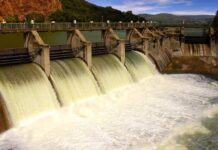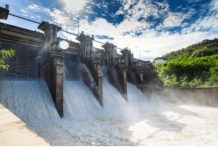Upon completion, it will be the third largest hydroelectric plant in the world with a capacity of 11,230MW.The $11.2bn project is expected to take eight years to complete. With first electricity generation commencing in 2014, the plant will serve an estimated 35 million people.
The project is owned by a consortium called Norte Energia, which is led by Brazilian federal power utility Eletrobras with a 49.98% interest. Gaia Energia e Participaรงรตes (Gaia) held a 10.2% share in the consortium. In April 2011, Vale, a Brazilian mining company, purchased 9.2% of Gaia share in the consortium for $1.4bn. Vale will reimburse Gaia’s investment made in the project. The Norte Energia consortium now consists of Eletrobras (49.98%), Queiroz Galvรฃo (10.02%), Vale (9.2%), Galvรฃo Engenharia (3.75%), Mendes Jรบnior (3.75%), Serveng (3.75%), JMalucelli Construtora (9.98%), Contern Construรงรตes (3.755%), Cetenco Engenharia (5%) and Gaia Energia e Participaรงรตes (1%).
Belo Monte Hydroelectric Power Plant history
The project was first proposed in 1975 but did not materialise due to opposition from environmental activists and local people. The proposal was abandoned in the 1990s and measures to mitigate the impact caused by the plant were studied. The project was later modified to protect the environment and the people living in the area.
The Brazilian Government granted environmental approval for the project in February 2010. On behalf of the government, the President Luiz Inacio Lula da Silva officially signed a contract for the construction of the plant with Norte Energia in August 2010.
Plant details
“The 233.1MW supplemental powerhouse will have nine bulb turbines of 25.9MW each.”
The Belo Monte power plant will comprise of three components – the main power house at Belo Monte, the primary spillway at Pimental Island and a supplemental powerhouse.
The main powerhouse will feature 20 550MW Francis turbines. The 233.1MW supplemental powerhouse will have nine bulb turbines of 25.9MW each. A supplemental spillway will be located in Bela Vista.
The three components are strategically located to minimise the area flooded by dam construction. Power generated by the plant will be sent to the National Interconnected System (SIN) through the Tucuruรญ-Macapรก-Manaus transmission line.
Contractors
Equipment for the plant will be supplied by a consortium led by Alstom. The consortium also comprises Germany’s Voith and Austrian Andritz.
“The Brazilian Government granted environmental approval for the project in February 2010.”
In February 2011, Alstom won a $684m contract to supply seven Francis turbines, hydro-mechanical equipment and related Gas Insulated Substations (GIS) for the new plant.
Andritz won a $444m contract to supply three Francis turbines and generators, 14 excitation systems and six bulb turbines and generators.
Andritz will also provide all ancillary equipment and hydro-mechanical equipment for the Pimental powerhouse of the plant.
A $450m contract was awarded to IMPSA in February 2011 to supply four 624MW Francis turbines and generators. IMPSA will supply, install and commission penstocks and lifting equipment.
Local environmental impact
The project has been facing severe criticism over its inefficiency and anticipated impact on the environment. Critics are of the opinion that the plant will be highly inefficient and generate only 10% of its capacity during the low-water season in the region.
Environmental activists believe that the project will damage the rainforest and threaten the survival of local tribes. About 500kmยฒ of land is expected to be flooded and thousands of people will be displaced. The government, however, has given assurances that the consortium constructing the plant will spend $800m to protect the environment.
The project continues to remain controversial as construction has commenced with only partial environmental approval, which does not allow for full construction.
Power market
The hydro power plant is being built to fulfil the anticipated increase in energy demand in Brazil. As the economy expands, energy demand in the country is expected to grow by 4.1% per annum on average over the next two decades.
At this rate, the power generation capacity of Brazil needs to be increased from the existing 100,000MW to 220,000MW by 2030. The new plant will help Brazil not only to meet this demand but also to curb carbon dioxide emissions.












































